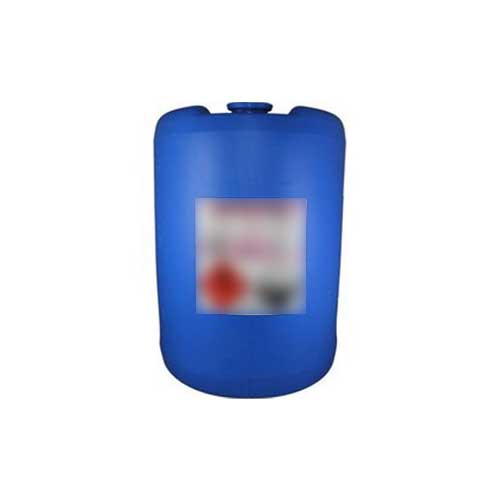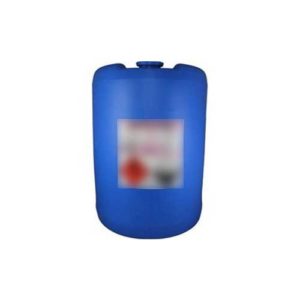PROPYLENE GLYCOL (PG)-C3H8O2
ABOUT:
Propylene glycol (PG) is manufactured on an industrial scale by two main processes:
Hydrolysis of propylene oxide: In this process, propylene oxide is hydrolyzed with water to form propylene glycol and a small amount of propylene glycol ethers. The reaction is usually carried out in the presence of a catalyst, such as sulfuric acid, and at elevated temperatures and pressures.
Hydration of propylene oxide: In this process, propylene oxide is hydrated with water in the presence of a catalyst, such as phosphoric acid or ion exchange resins, to form propylene glycol. The reaction is carried out at high temperatures and pressures.
PHYSICAL PROPERTIES:
Molecular weight: 76.09 g/mol
Melting point: -59°C (-74°F)
Boiling point: 188.2°C (370.8°F)
Density: 1.036 g/cm³ (at 20°C or 68°F)
Viscosity: 61.8 cP (at 25°C or 77°F)
PG is highly soluble in water and most organic solvents, including ethanol, acetone, and chloroform. It is also miscible with glycerol, propylene oxide, and some vegetable oils.
CHEMICAL PROPERTIES:
- Propylene glycol is a reactive compound and can undergo various chemical reactions such as esterification, oxidation, and reduction.
- Propylene glycol is hygroscopic, which means it readily absorbs moisture from the surrounding environment.
- Propylene glycol is a neutral compound with a pH close to 7. It does not act as an acid or a base in aqueous solutions.
- Propylene glycol is a stable compound that does not decompose at normal temperatures and pressures. However, it can react with strong oxidizing agents, such as potassium permanganate, to form glycolic acid.
- Propylene glycol is generally recognized as safe (GRAS) by the US Food and Drug Administration (FDA) for use in food, drugs, and cosmetics. However, in high concentrations, it can be toxic to humans and animals.
APPLICATIONS:
FOOD INDUSTRY:
- Because PG is a humectant, it helps foods retain moisture and keeps them from drying out.
- PG is a solvent that can dissolve several food additives, including flavours and colours. It is frequently used in flavourings and extracts, as well as drinks like soda and sports drinks.
- As PG contains antibacterial qualities, it may be able to help keep bacteria and other microbes from growing in food. It is frequently used in cheeses, poultry, and processed meats.
PHARMACEUTICAL INDUSTRY:
- PG is a common component in oral and topical treatments because it is a flexible solvent that may dissolve a wide variety of pharmaceuticals and active components.
- PG can function as an excipient, which is an inert ingredient added to a medication to assist it keep its uniformity, effectiveness, and stability.
- In topical treatments, PG can function as a humectant, aiding in the retention of moisture and preventing the substance from drying out.
- Pharmaceutical items can benefit from PG’s antibacterial characteristics, which can help stop the growth of bacteria and other pathogens.
- When used as a solubilizer, PG can assist make ineffectively soluble medicines and active components more soluble.
COSMETICS AND PERSONAL CARE INDUSTRY:
- Because PG is a humectant, it aids in retaining moisture and keeps items from drying out.
- PG, a solvent, has the ability to dissolve a wide variety of cosmetic components, including preservatives, pigments, and scents. It is frequently found in hair care, deodorant, and scent products.
- PG has the ability to thicken and stabilise cosmetic formulations by acting as a viscosity agent. Shampoos, conditioners, and other hair care products frequently contain it.
- In cosmetic products, PG’s antibacterial characteristics can aid in preventing the growth of bacteria and other microbes.
CHEMICAL INDUSTRY:
- Propylene glycol (PG) is commonly used as a reactive diluent in unsaturated polyester resins (UPRs) to improve their handling properties and reduce their viscosity. UPRs are a type of thermosetting plastic that are commonly used in the production of various products such as boats, automotive parts, and construction materials.
- PG can also improve the mechanical properties of UPRs, such as their flexibility and impact resistance, while also reducing their shrinkage and cracking during curing. Additionally, PG can enhance the thermal stability of UPRs, reducing the likelihood of degradation at high temperatures.
- PG can function as a plasticizer, enhancing the flexibility and toughness of polymers.
AUTOMOTIVE INDUSTRY:
- In automobile engines, PG is frequently used as an antifreeze. It aids in lowering the coolant’s freezing point, keeping the engine from freezing in cold weather.
- PG is also a heat-transfer medium in cooling systems for automobiles. It facilitates the removal of heat from the engine and its dissipation through the radiator.
- PG can be included in formulations for braking fluid. It can aid in enhancing the fluid’s stability and viscosity over a wide temperature range.
HVAC (heating, ventilation, and air conditioning) INDUSTRY:
- In HVAC systems, PG is frequently used as an antifreeze.
- In HVAC systems, PG is also employed as a heat transfer fluid.
- For outdoor HVAC equipment like air conditioners and heat pumps, PG can be a part of the deicing fluids.
TOBACCO INDUSTRY:
- As a humectant, PG is frequently used in tobacco products like cigarettes and cigars.
- PG has the ability to transport flavour in cigarette products. The flavour may be more evenly distributed throughout the product and the overall flavour may be improved.
- In tobacco goods, PG can serve as a preservative, extending their shelf life and preventing spoiling.
SAFETY MEASURES:
- Personal protective equipment: When handling PG, it is recommended to wear appropriate personal protective equipment (PPE), such as gloves, safety goggles, and protective clothing, to minimize exposure.
- Ventilation: Use in well-ventilated areas to reduce exposure to vapors.
- Avoid ingestion and skin contact: Do not ingest PG or allow it to come into contact with your skin, eyes, or mucous membranes.
- Storage: Store PG in a cool, dry, and well-ventilated area, away from sources of heat, ignition, and incompatible materials.
- Spill response: In the event of a spill, clean up immediately using appropriate spill response procedures and PPE.
- Regulatory compliance: Follow all applicable regulations and guidelines for handling, storage, transportation, and disposal of PG.





Reviews
There are no reviews yet.